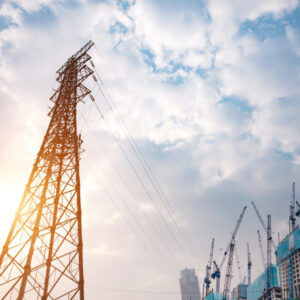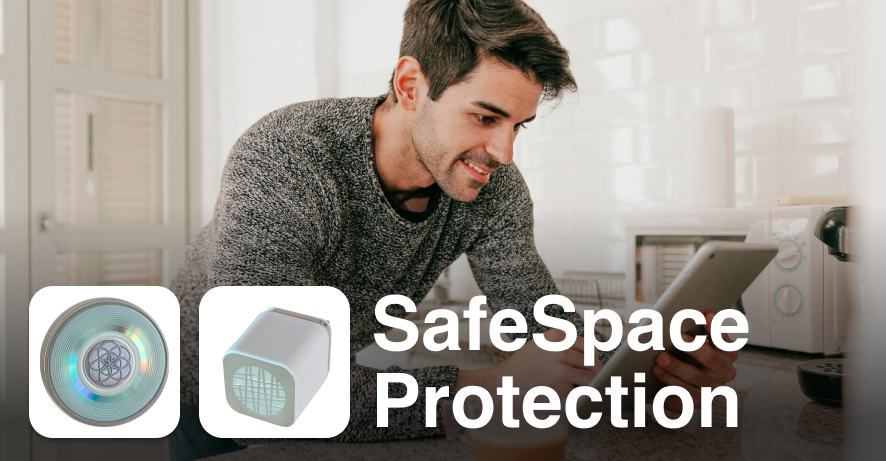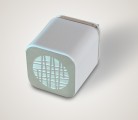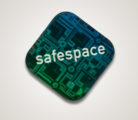What is a Safe Distance
to Live From a Cell Phone Tower?
You don’t have to go far to see a cell tower in your own neighborhood. As our mobile phone dependence deepens, with each one of us glued to screens for communication, work, and entertainment, the number of these towering steel structures keeps climbing. More phone towers mean stronger networks, but they also raise concerns about the health implications of living close to them.
The burning question for many people living near cell towers is, how close is too close? With cell towers emitting radiofrequency (RF) radiation, many people have begun to worry about the potential health effects of living in proximity to these RF waves. Here, we’ll try to cut through some of that noise, shed light on the potential risks, and offer some practical advice on the safe distance to live from a cell tower.
Understanding EMF (Electromagnetic Fields)
Electromagnetic fields (EMF) are a natural part of our world, and they have surrounded us since time immemorial. But nowadays, we have added a lot of man-made sources of EMFs from power lines and mobile phone networks.
EMF is divided into two main types: ionizing and non-ionizing. Ionizing EMF, which includes X-rays, packs a punch with enough energy to knock electrons loose and potentially damage cells. Non-ionizing EM, which includes the RF waves emitted by cell towers, lacks this knockout power, but it is still under scrutiny for its effects.
The World Health Organization (WHO) categorizes RF radiation as non-ionizing, implying it's less dangerous than its ionizing cousins. Still, for those living near a cell tower, even the slightest hint of risk can stir up anxiety. Although the science is still in debate, and research on cancer and other long-term health effects of cell towers and RF radiation has yet to reach a solid consensus. Given all this ambiguity, it's natural for people to be concerned about how RF radiation might impact their health.
Health Effects of EMF Radiation from Cell Towers
EMF radiation from cell towers has stirred up a mix of speculation and scientific inquiry regarding its health effects. The signals we rely on to keep our phones buzzing can also produce some serious static when it comes to our health.
Short-term Effects
For those living near a cell tower, short-term effects like headaches, fatigue, and dizziness are often cited. The constant hum of electromagnetic fields may affect sensitive individuals, leading to discomfort and unease.
Long-term Effects
The long-term effects are where the real mystery begins. There's ongoing research into potential connections between RF radiation and cancer risks, as well as neurological issues. While studies are mixed, concerns about cumulative exposure over time have driven much of the dialogue around safe distances.
Scientific Studies
Research on the health impacts of RF radiation remains a contentious field. Some studies suggest a possible link between prolonged exposure and adverse health effects, while others fail to find a significant correlation. Despite the absence of a definitive answer, it’s clear that understanding the potential risks of living near a cell tower is crucial.
Regulatory Guidelines
In response to these concerns, regulatory agencies like the Federal Communications Commission (FCC) in the United States have established guidelines to limit RF exposure from cell towers. These standards are meant to ensure that radiation levels are within a range considered safe, but the debate continues over whether they are strict enough.
Determining a Safe Distance from a Cell Tower
The question of how far away you should be from a cell tower to be safe is not straightforward. Various factors come into play, and expert recommendations vary widely. Here, we aim to provide a detailed understanding of these considerations.
Factors Influencing Safe Distances
Several elements affect the safe distance you should keep from a cell tower:
- Tower Height: Taller towers tend to spread RF radiation over a broader area, which can potentially reduce the intensity of exposure in any one spot.
- Signal Strength and Frequency: Higher signal strengths, often linked to newer technologies, can lead to stronger RF radiation. Lower frequencies tend to travel further and could expose more people at a distance.
- Surrounding Environment: The density of buildings, trees, and terrain around the tower can either absorb or reflect RF waves, influencing exposure levels in specific areas.
Government Regulations and Recommendations:
Governments all over the world have established guidelines for safe RF exposure levels. The FCC in the United States has set limits based on SAR, which measures the rate at which the body absorbs RF energy. In most cases, these standards are considered conservative to ensure public safety, but critics argue they may not sufficiently account for long-term exposure.
Insights from Scientific Research and Experts
Scientific studies and expert opinions on the safe distance from a cell tower vary:
- World Health Organization (WHO): The WHO's International Agency for Research on Cancer has classified RF radiation as possibly carcinogenic to humans (Group 2B), which means that there is limited evidence of carcinogenicity in humans and animals.
- Environmental Health Trust (EHT): This non-profit research and educational group suggests a minimum distance of 500 meters (around 1,640 feet) for residential areas near large cell towers, given their potential for high signal strength.
- Independent Experts: Some experts recommend a conservative distance of at least 100 to 300 meters (about 330 to 1,000 feet), citing studies that have found increased health effects in people living within this range.
Practical Guidelines
To better assess the safety of your home's distance from a cell tower, take the following steps:
- Check Regulations: Start by checking local guidelines and regulations for safe RF exposure levels. Some local governments might have stricter regulations than the national standard.
- Measure EMF Levels: Use an EMF meter to get a direct measurement of RF radiation levels around your home. This can help determine the actual exposure you're facing.
- Shield Your Home: Consider using EMF-blocking materials to shield your home. Specialized paints, window films, and curtains can reduce RF exposure indoors.
- Limit Device Usage: Reducing the use of wireless devices, especially for children, can help minimize overall RF exposure.
- Seek Expert Advice: If concerned, consult experts who specialize in RF radiation for tailored advice and mitigation strategies.
Navigating the balance between connectivity and health needs a thorough understanding of the risks and proactive measures to minimize them. The best approach is to stay informed and apply practical solutions to reduce exposure.
Protect Your Home From EMF
Here are some steps you can take today to start protecting your home from the harmful impact of EMF.
- Assessing EMF Exposure Levels: Start by assessing the level of EMF exposure in your home. You can use EMF meters to measure electromagnetic radiation from various devices and sources.
- Shielding Techniques: Employ shielding techniques to reduce EMF exposure. This includes using products like an EMF Adapter and Radiant Room to prevent electromagnetic radiation from entering your home through windows.
- Paints and Wall Shields: Consider using special paints and wall shields designed to block EMF. These products can be applied to walls to reduce the penetration of electromagnetic radiation into living spaces. For more tips on how to block cell tower radiation, click here.
- Behavioral Adjustments: Make behavioral adjustments to minimize EMF exposure. Limit the use of wireless devices, such as smartphones, laptops, and tablets, especially in areas where you spend a lot of time.
- Reducing Duration and Proximity of Exposure: Reduce the duration and proximity of exposure to EMF sources. For example, avoid placing wireless routers or other electronic devices near frequently used areas like bedrooms or living rooms.
Don’t Wait: Create a Healthier Home
Safeguarding your home from EMF exposure is vital for your health and peace of mind. By checking EMF levels, using shielding methods, adjusting your habits, and considering your distance from cell towers, you're taking active steps to keep yourself and your family safe.
While there's no one-size-fits-all answer to the question of how far you should live from a cell tower, it's wise to be on the side of caution and keep a reasonable distance. Balancing your need for connectivity with your health is key, so don't hesitate to make changes that benefit both.
It's the little adjustments that count. Stay aware of EMF exposure and make thoughtful choices so that you can create a healthier living space for yourself and those you care about. Your well-being matters, so keep prioritizing it in your everyday decisions.
Know Your EMF Health Risks
- Cell and Smart Phones
- Electrostress from Computers
- EMFs in the Home
- Electrostress and Travel
- Is Wi-Fi Dangerous? Here’s What You Need to Know
- How to Protect Yourself in the Age of 5G Side Effects
- Power Lines
- Cell Towers
- Radiation from the Earth
- EMFs from Underground Pipes
- Smart Meters
- 5G Dangers & Health Effects: What You Need to Know
Choose Products to Protect Yourself

SafeSpace Solutions designed to counter the harmful EMF pollution from Wi-Fi routers
EMF Adapter
An all-in-one solution for clearing and protecting an entire home or office space from the harmful effects of EMF radiation. The EMF Adapter works through a building’s electrical circuitry Read more
Smart Patch
Our laboratory-tested SafeSpace Smart Patch has been proven to transform and neutralize the harmful effects of EMFs. When placed directly on devices it radiates a powerful protective field Read more







